Would you like to add DNS records for your WP Mail SMTP mailer setup with your domain hosted on Hostgator? Implementing the DNS record details provided by your mailer is key to ensuring domain verification and boosting the deliverability of your emails.
In this tutorial, we’ll show you how to add DNS records for WP Mail SMTP on sites hosted with Hostgator.
In This Article
Understanding How DNS Records Work in SMTP
The Domain Name System (DNS) is like the internet’s address book. DNS provides a means to map a domain name (e.g., example.com) to its corresponding IP address (e.g., 123.123.80.20). Just like how you store a person’s phone number with their name on your smartphone to easily remember them.
DNS records act as a storage system for the settings needed to map a domain name to its corresponding IP address. This means each domain has its unique set of DNS records.
Most mailers in WP Mail SMTP use DNS records as a means to verify your domain on their platform. In some cases, it can be used to improve email deliverability, as in the case of adding SPF, DKIM, and DMARC records.
In the next sections, we’ll cover the steps for adding DNS records for sites hosted on Hostgator.
Accessing DNS Settings in Hostgator
To locate your site’s DNS settings, you’ll first need to log in to your Hostgator account.
Once you’ve accessed your Hostgator account dashboard, select the Domains option from the menu on the left side.
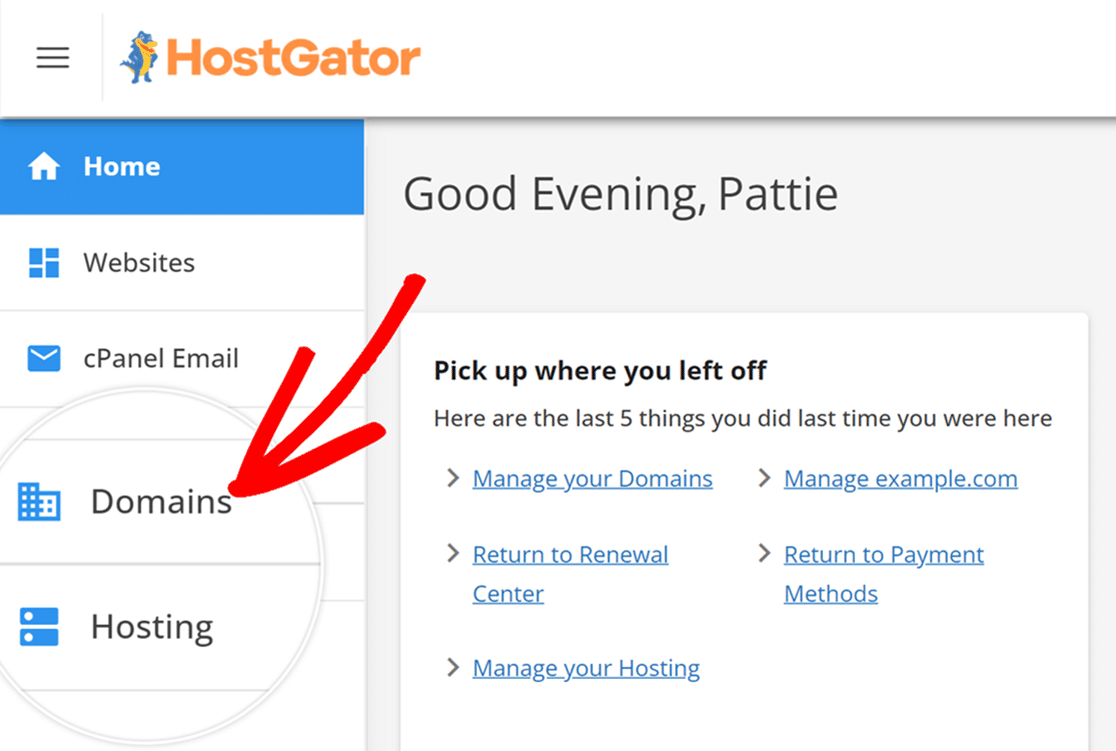
This will display all the domains linked to your profile. To modify the DNS settings, scroll to the bottom of the page and click on Advanced Tools.
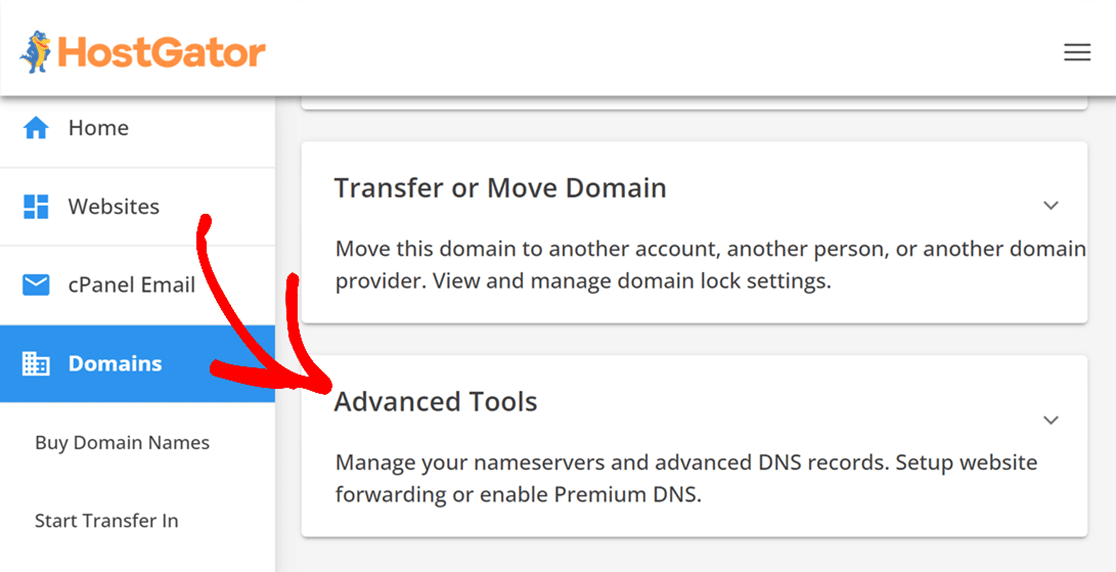
Then, click MANAGE under the Advanced DNS Records section.
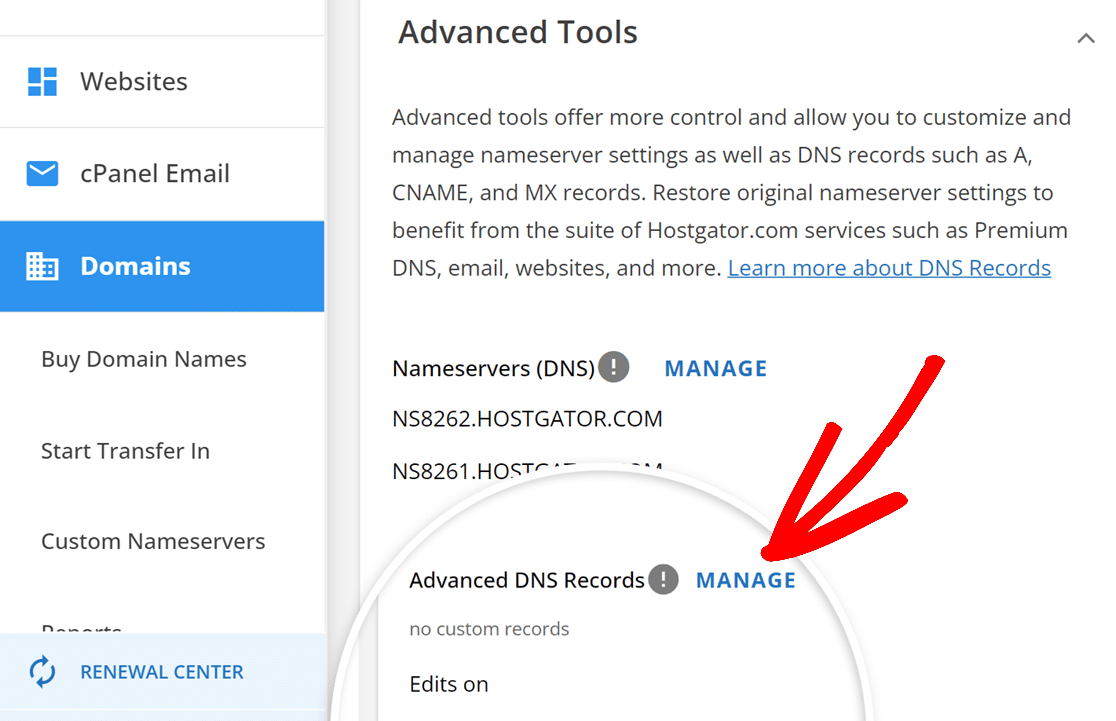
From here, you’ll be able to add new DNS records, which we’ll cover in the next section.
Adding DNS Records in Hostgator
To add a new DNS record, click on the Add Record button.
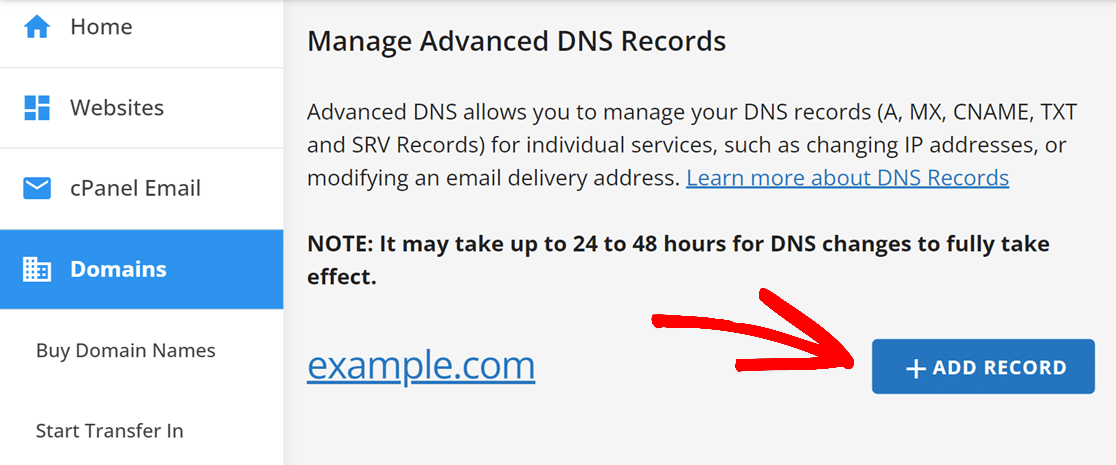
Then, a new section will appear where you can add details for a single DNS record. As an example, we’ll add one of the CNAME records SendLayer provides.
To proceed, select CNAME from the dropdown.
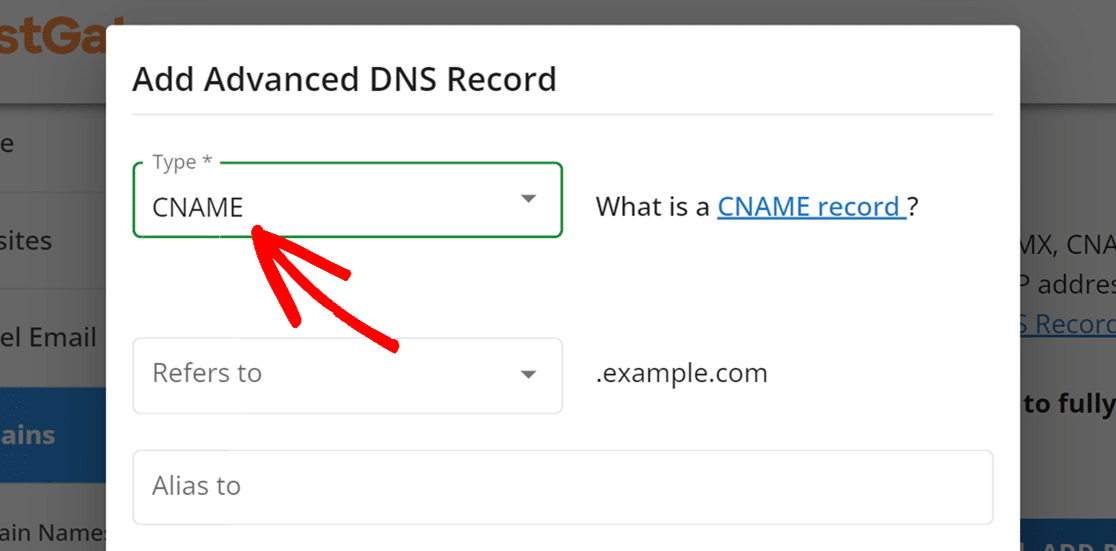
Next, select Other Host from the Refers to dropdown. After that, enter the SendLayer Hostname into the Host Name field in Hostgator.
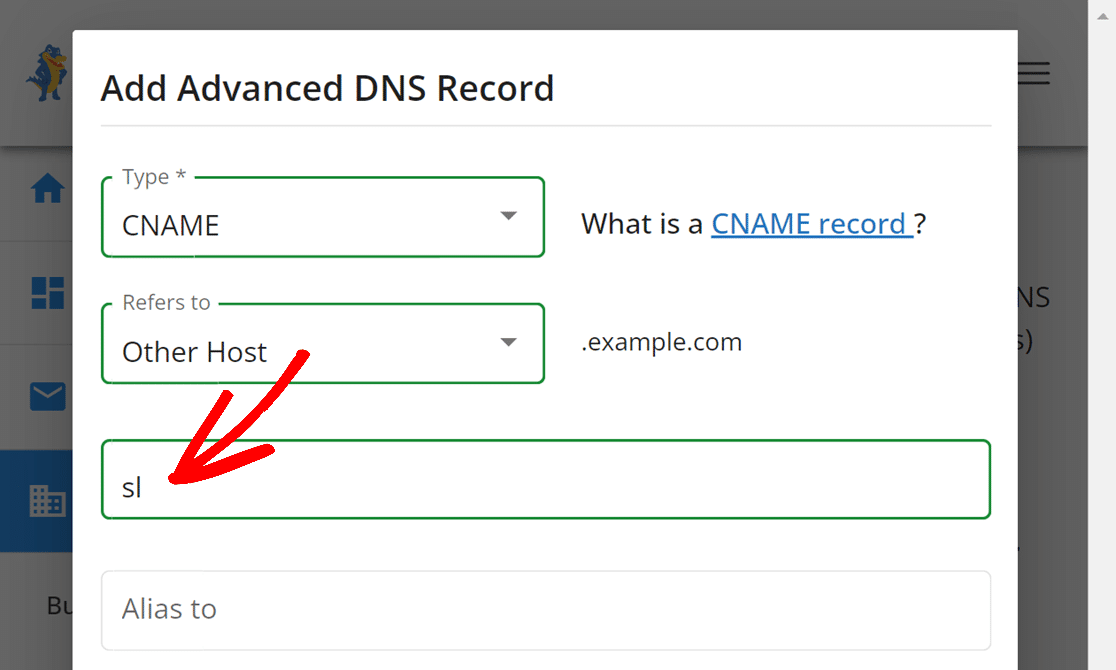
Next, add the SendLayer Value to the Alias to field.
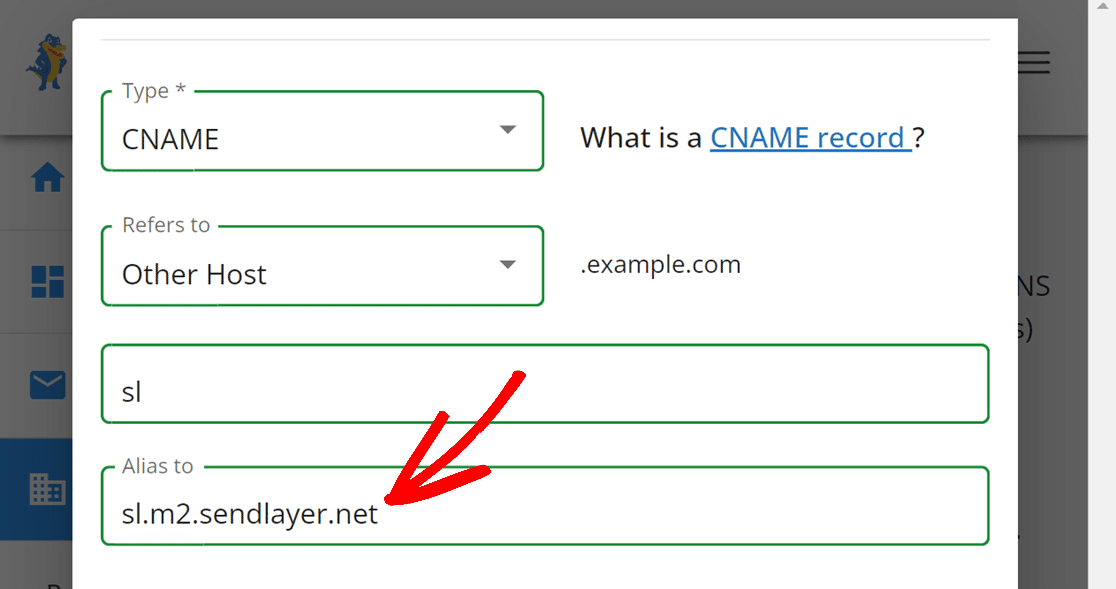
For the TTL (Time To Live), select 15 Minutes.
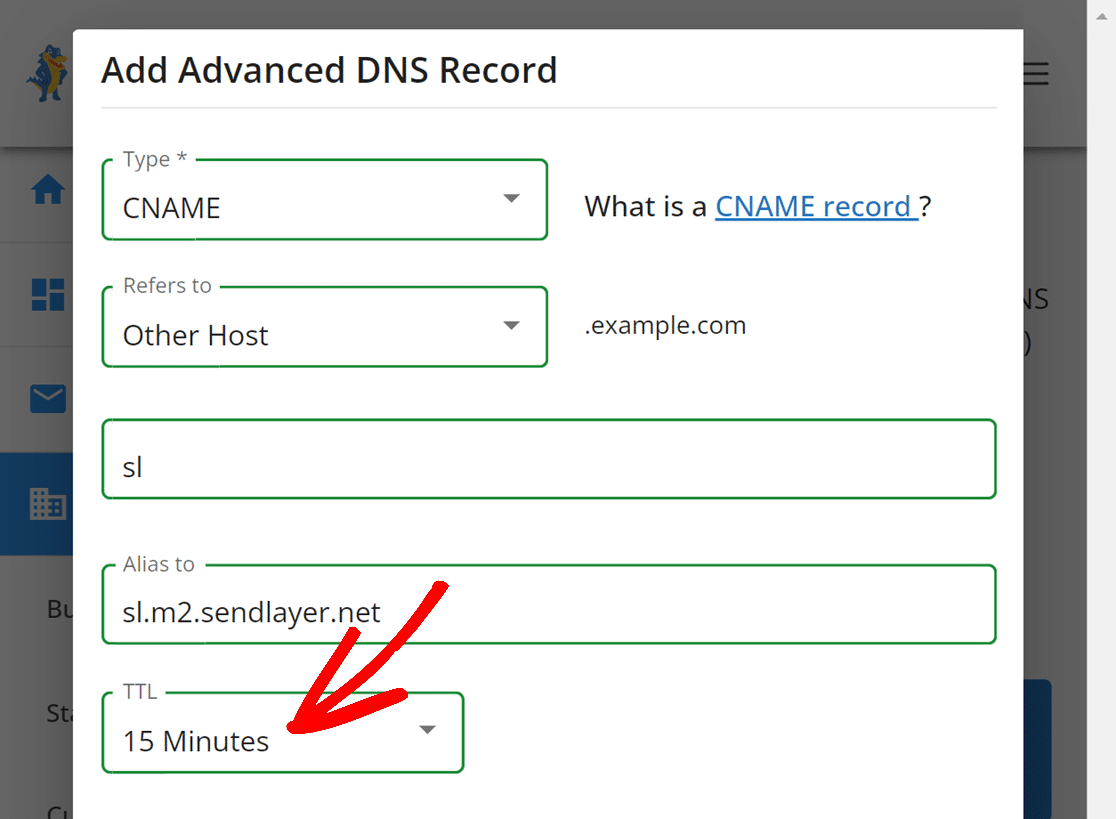
Finally, click on the Add button to add your new record.
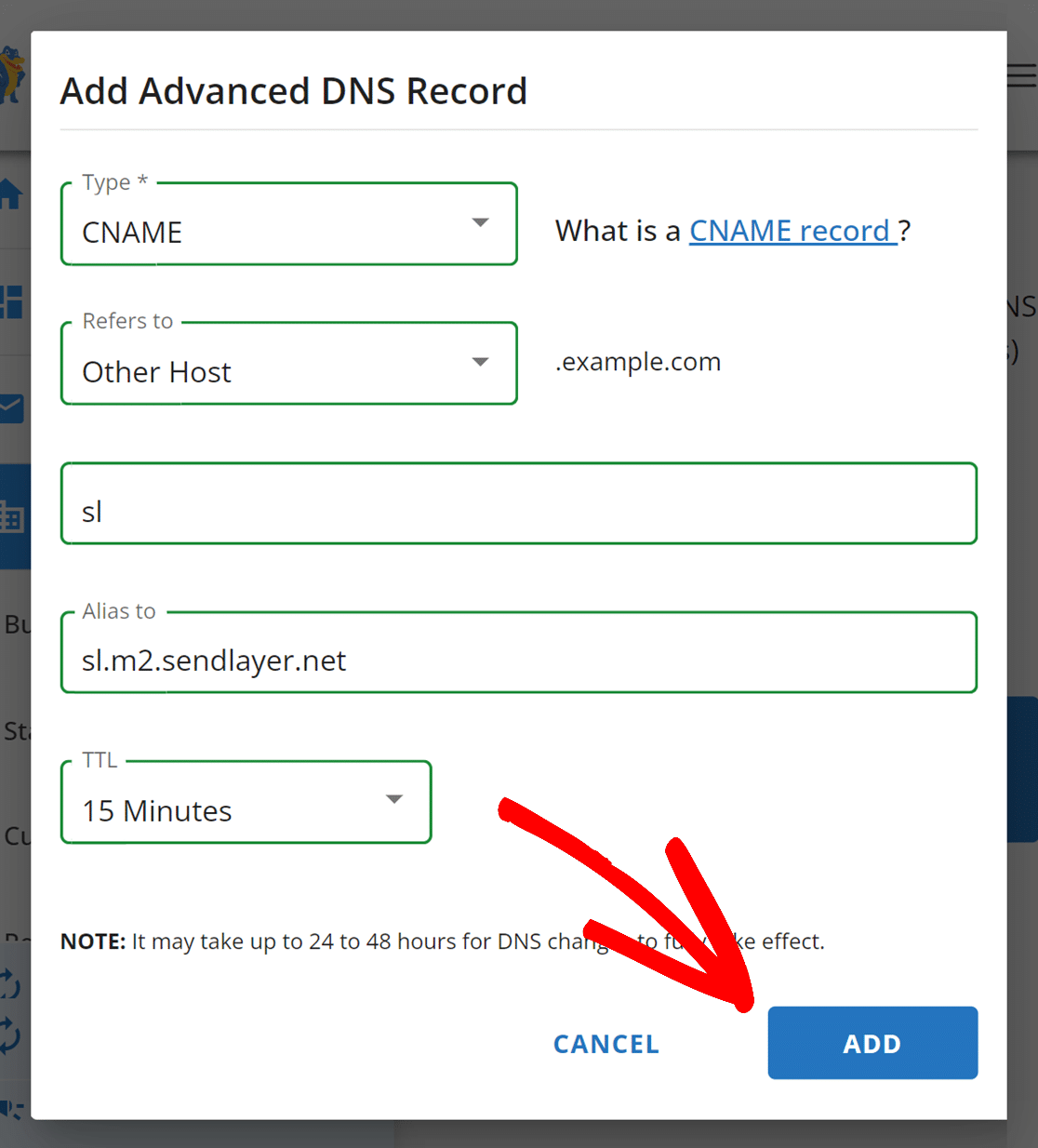
Once you’ve added the first record, repeat the steps above to add the remaining DNS records.
Note: It can take up to 24-48 hours for DNS changes to propagate.
Verifying Your DNS Records
After adding DNS records to support WP Mail SMTP, we recommend verifying that they’ve been implemented correctly. This step helps ensure optimal email deliverability by confirming that your outgoing emails are authenticated.
There are a couple of ways to verify your DNS records:
- Sending a test email: Utilize WP Mail SMTP’s built-in tool for sending a test email. If there’s an issue with your DNS records, an error notification will pop up.
- Using the Site Health tool: The WordPress Site Health tool can help identify any DNS verification problems. If there’s a verification issue with your DNS records, you’ll see a message that provides actions you can take to help resolve it.
For a thorough walkthrough on how to use these tools, be sure to check out our complete guide to verifying your DNS records.
Note: Changes to DNS settings might take up to 48 hours to fully propagate. If you’ve made recent updates, giving it a little more time before troubleshooting might be worthwhile.
That’s it! Now you know how to add DNS records on domains hosted with Hostgator.
Next, would you like to view the email logs your site has collected? See our guide to viewing email logs for details on how to see your email content, delivery status, source, and technical details.
